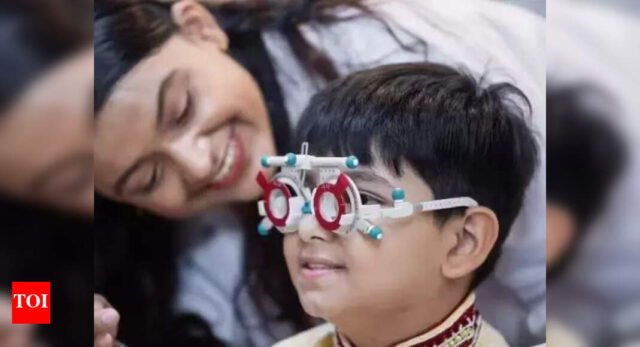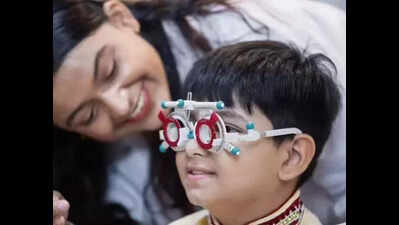Visakhapatnam: With nearly half of the global population projected to be myopic by 2050, experts at the Infor Myopia Centre of the L V Prasad Eye Institute (LVPEI) in Vizag and Vijayawada are sounding the alarm over the rapid rise of myopia in India, particularly among children. At the current trajectory, one in every two children in India may develop myopia by 2050, according to specialists at LVPEI. Children with high myopia — typically above -6 dioptres — are at significantly greater risk of developing potentially blinding complications later in life.Myopia is a condition where children see nearby objects clearly, but distant objects appear blurry. It typically begins during the school years. A child is generally considered myopic when their refractive error measures -0.5 diopters or more. Warning signs include squinting, frequent eye rubbing, sitting too close to screens or books, and copying from friends rather than from the board due to difficulty in seeing the board in class.Teachers can help detect early signs by observing changes in a student’s behaviour — such as squinting or struggling to read from a distance. Such observations should be promptly communicated to parents to ensure the child receives a comprehensive eye examination. Parents are urged to monitor screen time, encourage outdoor play and regular breaks during near work (such as reading or smartphone use), and schedule yearly vision screenings, according to experts at LVPEI.Children with one or both myopic parents are at higher risk. However, environmental factors are increasingly recognised as key contributors. Spending long hours on near tasks like reading or using smartphones, coupled with insufficient time outdoors, is strongly associated with the rise in childhood myopia.Healthcare experts recommend that children spend at least two hours a day outdoors without screens, preferably in natural sunlight. Activities such as outdoor sports, nature walks, and cycling not only support physical fitness but also promote healthier vision development.Early detection and intervention are crucial to preventing long-term complications. With coordinated efforts between parents, teachers, and eye care professionals, childhood myopia can be effectively managed—and in many cases, its progression slowed. Once detected, myopia can be managed through various evidence-based options such as corrective glasses, contact lenses with peripheral defocus designs, low-dose atropine eye drops, and lifestyle changes including increased outdoor activity, reduced near work, and limited screen time.Infographics:Do’s and don’ts to prevent myopiaEncourage outdoor play for 1-2 hours a dayEnsure well illuminated study areasMaintain proper reading posture and distanceSchedule regular eye examsFollow the 20-20-20 rule (every 20 minutes of screen time, look 20 feet away for 20 seconds)Do not allow children prolonged screen time without breaksDo not let children study in poor lighting or while lying downDo not ignore early warning signs like squinting or frequent blinkingDo not delay professional consultation when vision problems arise








